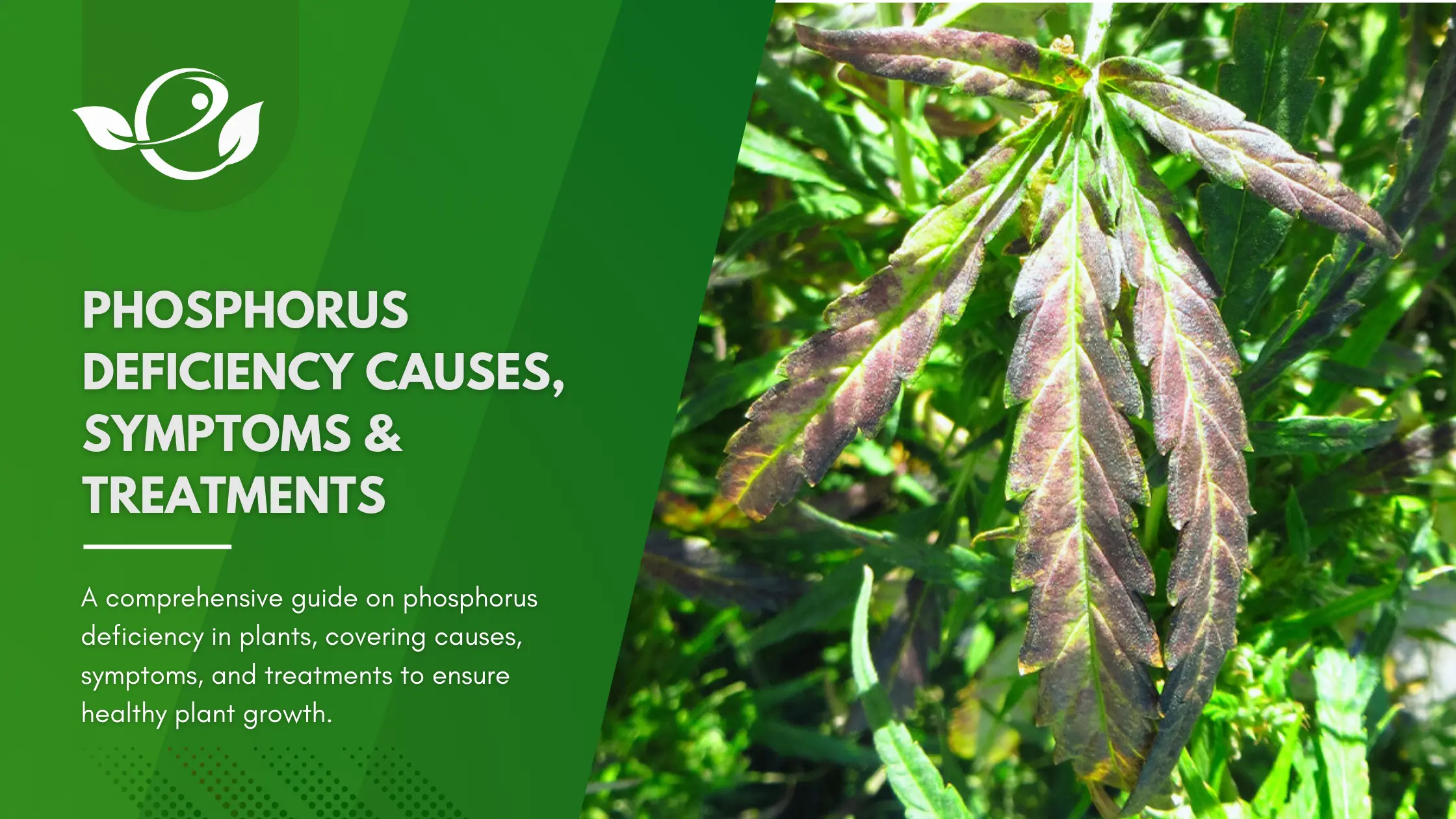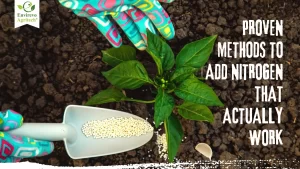Table of Contents
In the intricate tapestry of plant nutrition, phosphorus stands out as a vital element that fuels the growth and development of all green life forms. Yet, despite its importance, phosphorus often exists in the soil in a form that is inaccessible to plants, leading to deficiency. When plants suffer from a lack of phosphorus, the consequences ripple through their physiological processes, affecting everything from root development to flowering. Understanding the causes, recognizing the symptoms, and implementing effective treatments are essential steps in ensuring that plants reach their full potential, yielding healthy, robust growth.
Phosphorus deficiency can be a silent killer, manifesting subtly yet powerfully as stunted growth, discolored leaves, and diminished yields. This nutrient plays a key role in photosynthesis, energy transfer, and the synthesis of nucleic acids, all of which are fundamental to plant vitality. Without adequate phosphorus, plants struggle to develop properly, leading to significant agricultural and horticultural challenges. However, with the right knowledge and proactive management, phosphorus deficiency can be diagnosed early and treated effectively, paving the way for healthier crops and more bountiful harvests.
Causes of Phosphorus Deficiency in Plants
There are differences in susceptibility to phosphorus deficiency between different crops. Roots absorb phosphate ions when they are dissolved in the soil water. Calcareous soils with high calcium concentrations can be poor in phosphorus. Most commonly, however, it is the availability of this nutrient that is limited because phosphorus is adhered to soil particles and cannot be taken up by the plant. Both alkaline soils and acidic soils can show low availability. Soils with low organic matter or iron-rich soils can also be problematic.
Cold weather that hinders proper development and function of the roots can also lead to this disorder. Drought conditions or diseases that limit the absorption of water and nutrients by the roots can trigger deficiency symptoms. Soil moisture, in turn, increases the uptake of this nutrient and results in significantly higher yields.
Soil-Related Factors
- Low Phosphorus Content in Soil: Phosphorus naturally occurs in soils in various forms, but not all of these forms are accessible to plants. Soils that are naturally low in phosphorus or have a high content of unavailable phosphorus can create a deficiency. For example, sandy soils often have low phosphorus levels because they lack the organic matter that binds phosphorus, while clay soils may have phosphorus that is tightly bound to soil particles, making it difficult for plant roots to absorb.
- Soil pH Levels: The pH of the soil plays a crucial role in the availability of phosphorus. In acidic soils (pH below 5.5), phosphorus tends to bind with iron and aluminum, forming compounds that plants cannot easily absorb. On the other hand, in alkaline soils (pH above 7.5), phosphorus binds with calcium, again becoming less available. The optimal pH range for phosphorus availability is between 6.0 and 7.0, where phosphorus remains in a soluble form that plants can readily take up.
- Soil Compaction: Compacted soils, which are common in areas with heavy machinery or high foot traffic, can lead to reduced phosphorus availability. Compaction limits root growth, reducing the plant’s ability to explore the soil for nutrients. Additionally, compacted soils often have poor drainage, which can further restrict phosphorus availability by creating anaerobic conditions that slow down the mineralization of organic matter, a key process in making phosphorus available to plants.
- High Levels of Other Nutrients: An imbalance in soil nutrients can also lead to phosphorus deficiency. For example, soils with high levels of iron, aluminum, or calcium can cause these elements to bind with phosphorus, rendering it unavailable to plants. Additionally, over-fertilization with nitrogen or potassium can lead to competitive uptake, where the presence of these nutrients reduces the plant’s ability to absorb phosphorus. This is especially problematic in soils that are already low in phosphorus, as the limited available phosphorus is further restricted by the presence of other nutrients.
Environmental Factors
- Cold Temperatures: Phosphorus uptake is significantly reduced in cold soils, particularly in the early stages of the growing season. Cold temperatures slow down root activity and microbial processes in the soil, both of which are critical for the absorption and mineralization of phosphorus. This is why early-season crops or plants growing in regions with cool springs often exhibit phosphorus deficiency symptoms, even if the soil contains adequate levels of phosphorus.
- Excessive Moisture: Waterlogged soils can exacerbate phosphorus deficiency by creating anaerobic conditions that hinder the activity of soil microbes responsible for mineralizing organic phosphorus. Excessive moisture can also lead to the leaching of phosphorus from the soil, particularly in sandy or heavily irrigated soils. Additionally, in very wet conditions, roots may become oxygen-deprived, further limiting their ability to take up phosphorus.
Human-Related Factors
- Poor Fertilization Practices: Inadequate or improper fertilization practices are a common cause of phosphorus deficiency. The use of fertilizers that are low in phosphorus, or the failure to apply phosphorus fertilizers when needed, can lead to a gradual depletion of available phosphorus in the soil. Organic fertilizers, while beneficial for soil health, often contain lower levels of phosphorus compared to synthetic fertilizers, and their phosphorus content may not be immediately available to plants.
- Inappropriate Crop Rotation: Crop rotation is a key practice in maintaining soil fertility, but when done improperly, it can lead to phosphorus deficiency. Repeatedly planting crops that are heavy phosphorus feeders, such as cereals or legumes, without replenishing the soil’s phosphorus reserves, can deplete the available phosphorus over time. In contrast, rotating crops with different nutrient needs or incorporating cover crops that help to mobilize phosphorus can help maintain adequate phosphorus levels in the soil.
Symptoms of Phosphorus Deficiency in Plants
Phosphorus deficiency often presents with subtle symptoms that can be easily overlooked, but early detection is crucial for effective treatment. The symptoms can vary depending on the plant species, but there are some common indicators to watch for.
Phosphorus deficiency symptoms can appear at all stages but are more pronounced in young plants. Contrary to other nutrients, the symptoms of this deficiency are generally not very striking and can be difficult to identify. In mild cases, a possible indication for this disorder is that plants are dwarfed or stunted. In some cases, phosphorus deficiency is characterized by burnt tips and the development of chlorosis as well as necrotic patches on the leaf margins. Flowers and fruits are produced, but fruit yields are low.
- Stunted Growth: One of the most noticeable symptoms of phosphorus deficiency is stunted growth. Plants may appear smaller than usual, with reduced leaf size and shorter internodes. This stunted growth is due to the essential role phosphorus plays in energy transfer and cell division. Without sufficient phosphorus, plants cannot produce the energy required for growth, leading to reduced overall biomass.
- Dark Green or Purplish Leaves: Another hallmark symptom of phosphorus deficiency is the discoloration of leaves, particularly in older leaves. In severe deficiencies, stem and petioles show a dark green to purple discoloration. The lower sides of older leaves also show a purple pigmentation, starting on the tips and margins and later expanding to the rest of the leaf surface. This discoloration is due to the accumulation of anthocyanins, pigments that plants produce in response to stress. These leaves may become leathery and veins may form a brown netting. The purplish color is especially common in crops like maize, where phosphorus deficiency is often first noticed by the change in leaf color.
- Delayed Maturity: Phosphorus is crucial for the development of flowers and fruits, so a deficiency can lead to delayed maturity. Plants may take longer to flower or fruit, and the yield is often reduced. Fruits and seeds may also be smaller and less viable, impacting the overall productivity of the plant. In some cases, flowering may be sparse, or the flowers may drop prematurely.
- Poor Root Development: Phosphorus is essential for healthy root development, and a deficiency can lead to weak, underdeveloped root systems. Plants with phosphorus deficiency often have roots that are shorter and less branched, reducing their ability to absorb water and nutrients. This poor root development can make plants more susceptible to drought and other environmental stresses, further compounding the effects of phosphorus deficiency.
- Reduced Flowering: Phosphorus deficiency can lead to a significant reduction in flowering. Plants may produce fewer flowers, or the flowers that do form may be small and poorly developed. This is particularly problematic in fruiting crops, where a reduction in flower production directly translates to lower yields.
- Poor Seed and Fruit Formation: Even if flowering occurs, phosphorus-deficient plants often produce poor-quality seeds and fruits. Seeds may be small, shriveled, and less viable, while fruits may be misshapen or fail to reach their full size. In some cases, fruiting may be entirely aborted, especially in severe cases of deficiency.
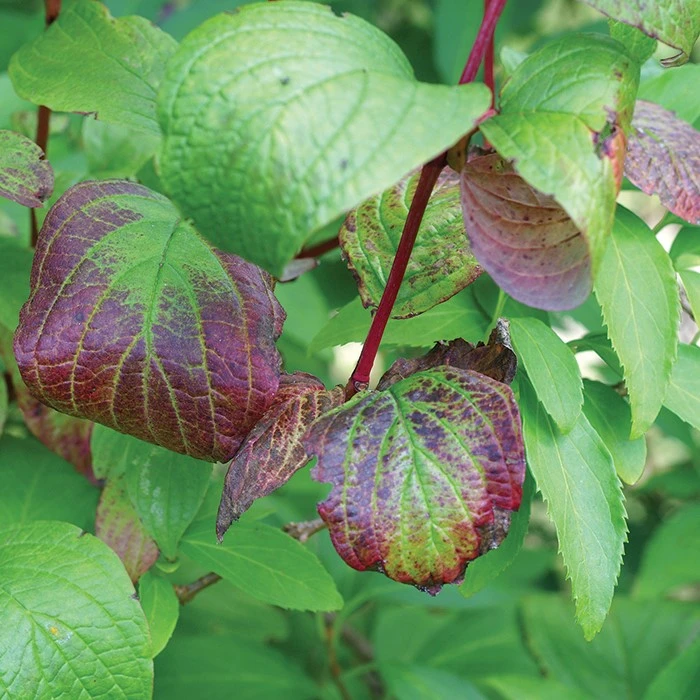
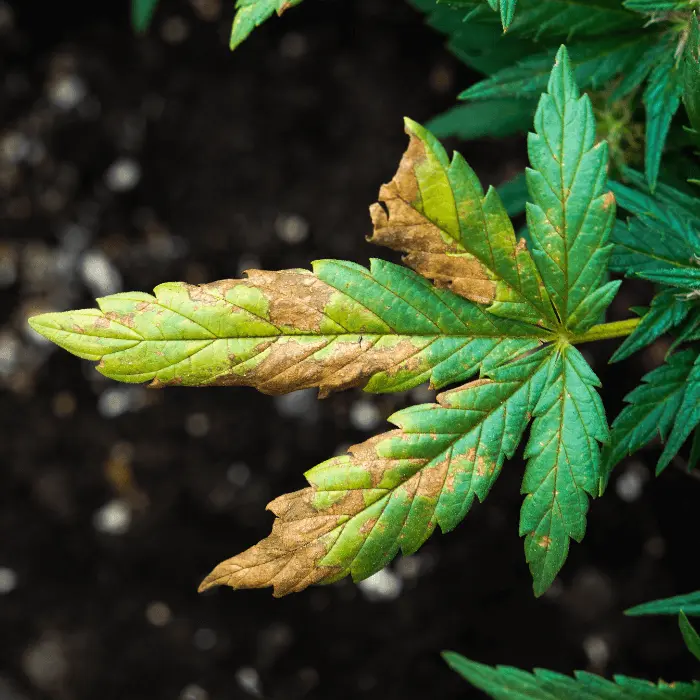

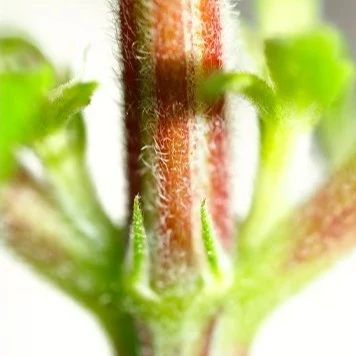
Phosphorus Deficiency Can also be found in:
Almond, Apple, Apricot, Banana, Barley, Bean, Bitter Gourd, Cabbage, Canola, Carrot, Cauliflower, Cherry, Chickpea & Gram, Citrus, Coffee, Cotton, Cucumber, Currant, Brinjal, Garlic, Ginger, Black & Green Gram, Grape, Guava, Lentil, Lettuce, Maize, Mango, Cassava, Melon, Millet, Okra, Olive, Onion, Ornamental, Papaya, Pea, Peach, Peanut, Pear, Capsicum & Chilli, Pigeon Pea & Red Gram, Pistachio, Pomegranate, Potato, Pumpkin, Rice, Rose, Sorghum, Soybean, Strawberry, Sugar, Beet, Sugarcane, Sweet Potato, Tobacco, Tomato, Turmeric, Wheat, Zucchini.
Treatments for Phosphorus Deficiency
Once phosphorus deficiency has been diagnosed, it’s important to implement corrective measures promptly. The treatment approach will depend on the severity of the deficiency, the type of plants being grown, and the specific soil and environmental conditions.
Organic methods
Phosphorus levels in soils can be replenished by applying farmyard manure, or other materials (organic mulch, compost and guano) or a combination thereof. The incorporation of residues to the soil after harvest can also contribute to maintaining a positive phosphorus balance in the long term and improve soil structure. The decomposition of organic matter provides a steady supply of plant-available phosphorus.
- Compost: Compost made from a variety of organic materials, including kitchen scraps, yard waste, and animal manure, provides a slow-release source of phosphorus. It also enhances soil structure, water retention, and microbial activity, all of which contribute to improved phosphorus availability.
- Manure: Animal manure, particularly from poultry, is rich in phosphorus. However, it’s important to use well-aged or composted manure, as fresh manure can contain high levels of nitrogen that may lead to nutrient imbalances. Manure should be applied and incorporated into the soil before planting to prevent phosphorus runoff.
- Mycorrhizal Fungi: These beneficial fungi extend the root system’s reach, allowing plants to access phosphorus and other nutrients from a larger volume of soil. Mycorrhizal inoculants can be applied to seeds, transplants, or soil to establish a healthy mycorrhizal network.
- Application and Maintenance: To maintain mycorrhizal populations, avoid excessive tillage, over-fertilization with synthetic phosphorus, and the use of fungicides that can harm beneficial fungi.
Chemical Control
- Use fertilizers containing phosphorus (P).
- Examples: Diammonium phosphate (DAP), Single super phosphate (SSP).
- Consult your agricultural advisor to know the best product and dosage for your soil and crop.
Further recommendations:
- It is recommended to do a soil test before the start of the cropping season to optimize your crop
production.
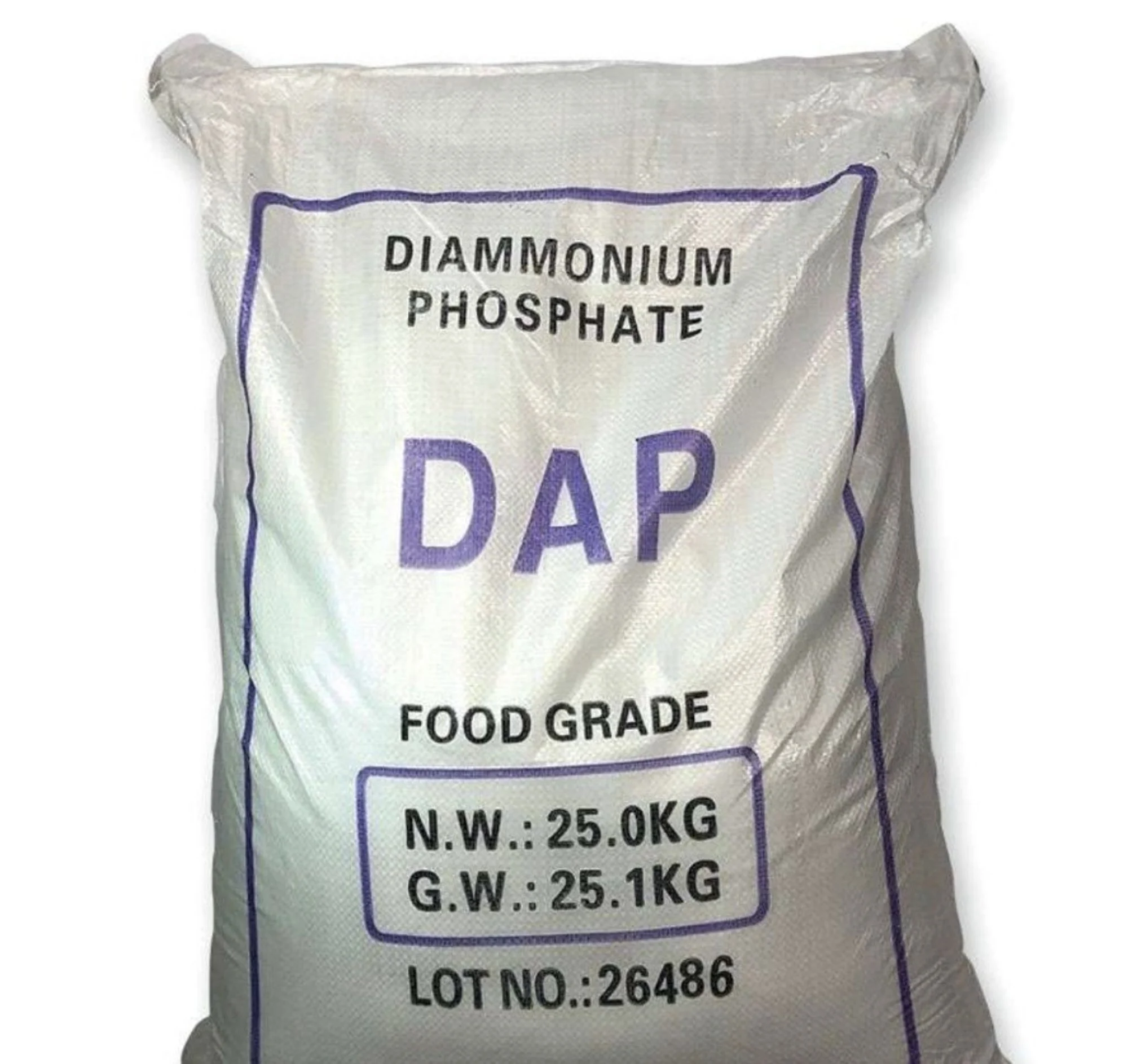

Soil Amendments
1. Phosphorus-Rich Fertilizers
The most direct way to correct phosphorus deficiency is by applying phosphorus-rich fertilizers. There are several types of phosphorus fertilizers available, each with its own advantages and application methods.
- Superphosphate: Superphosphate fertilizers contain a high concentration of soluble phosphorus, making them an effective treatment for immediate correction of phosphorus deficiency. They are available in single, double, or triple forms, with triple superphosphate being the most concentrated.
- Bone Meal: Bone meal is an organic source of phosphorus derived from ground animal bones. It releases phosphorus slowly, making it suitable for long-term soil improvement. Bone meal is particularly effective in slightly acidic to neutral soils.
- Rock Phosphate: Rock phosphate is a naturally occurring mineral that releases phosphorus slowly over time. It is best suited for acidic soils, where it can be more readily broken down by soil microbes.
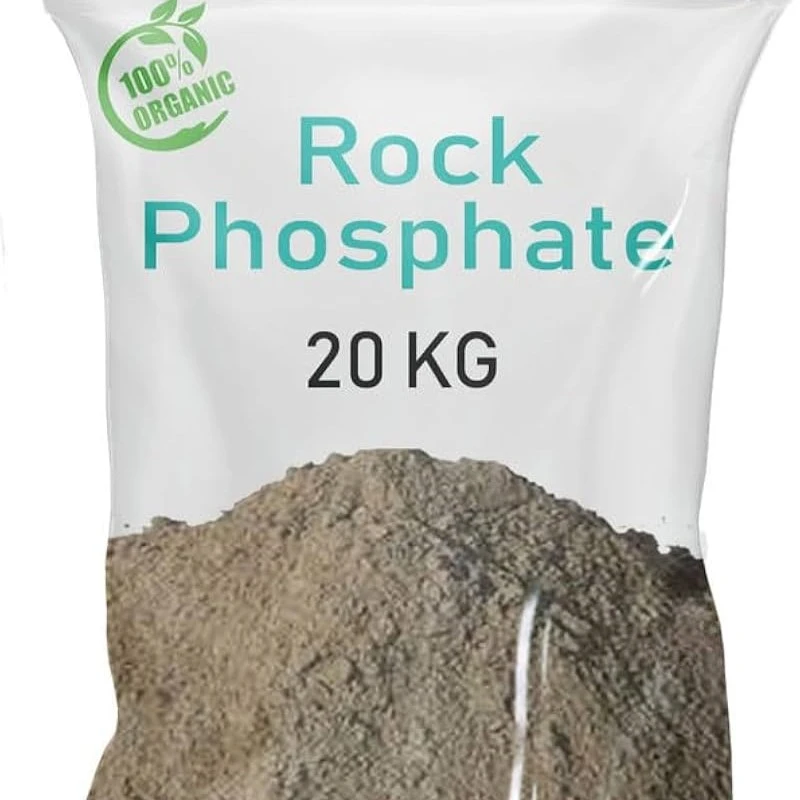

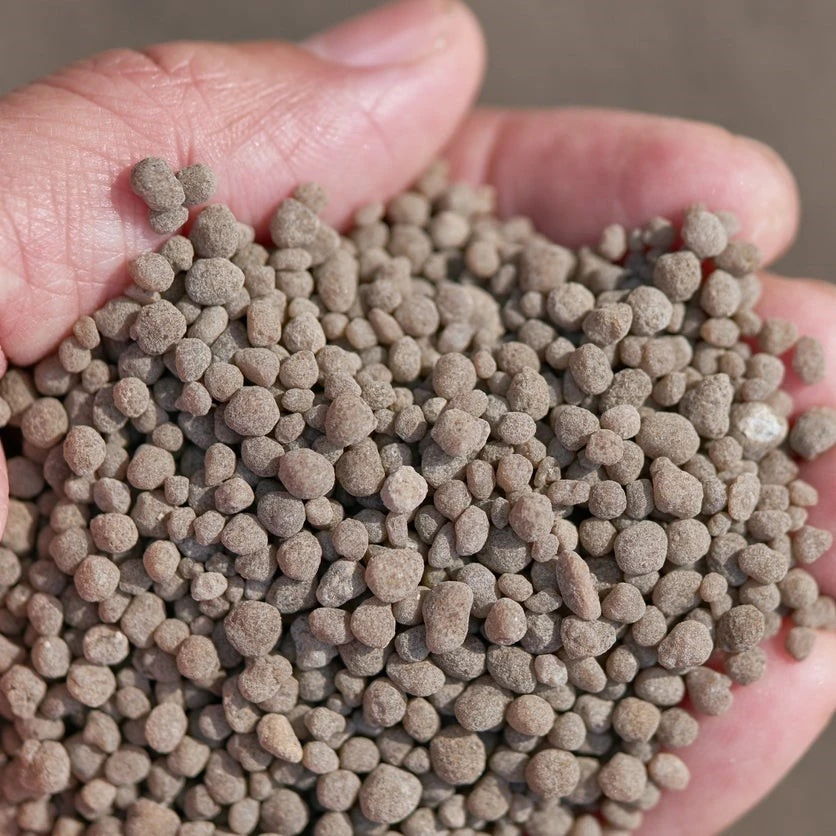
When applying phosphorus fertilizers, it’s important to follow recommended application rates and methods. Over-application can lead to nutrient imbalances and environmental issues, such as phosphorus runoff into water bodies. Incorporating fertilizers into the soil or applying them near the root zone can enhance phosphorus availability and reduce losses due to runoff or leaching.
2. Adjusting Soil pH
As discussed earlier, soil pH plays a critical role in phosphorus availability. If soil tests reveal that the pH is outside the optimal range for phosphorus uptake, adjusting the pH can help alleviate phosphorus deficiency.
- Liming Acidic Soils: In acidic soils, applying lime can raise the pH, making phosphorus more available to plants. The amount of lime needed will depend on the soil’s current pH and buffer capacity. It’s important to apply lime well before planting, as it takes time for the pH to adjust.
- Sulfur or Gypsum for Alkaline Soils: In alkaline soils, sulfur or gypsum can be used to lower the pH and increase phosphorus availability. Sulfur is effective in lowering pH but should be used carefully to avoid over-acidification. Gypsum does not affect soil pH directly but can help displace calcium that binds phosphorus in alkaline soils.
Improved Agricultural Practices
In addition to choosing the right type of phosphorus fertilizer, proper fertilization techniques are essential for maximizing phosphorus availability and preventing future deficiencies.
- Balanced Fertilization: Applying a balanced fertilizer that includes nitrogen, phosphorus, and potassium (NPK) can help prevent nutrient imbalances that lead to phosphorus deficiency. Fertilizer formulations should be tailored to the specific needs of the crop and the soil’s nutrient status.
- Slow-Release Fertilizers: Slow-release phosphorus fertilizers provide a steady supply of phosphorus over time, reducing the risk of leaching and runoff. These fertilizers are particularly useful in sandy soils or regions with high rainfall.
- Banding and Side-Dressing: Banding phosphorus fertilizers near the root zone or side-dressing them during the growing season can improve phosphorus uptake by placing the nutrients where roots are most active. This method is especially effective in soils with high phosphorus-fixing capacity.
Foliar Applications
Foliar application of phosphorus is an effective method for quickly correcting deficiency, especially during critical growth stages when phosphorus demand is high. Foliar sprays deliver phosphorus directly to the leaves, bypassing the soil and allowing for rapid absorption.
- Phosphorus Foliar Fertilizers: Foliar fertilizers containing soluble forms of phosphorus, such as monoammonium phosphate (MAP) or diammonium phosphate (DAP), can be applied during periods of active growth. It’s important to follow recommended application rates and avoid spraying during hot or windy conditions, as this can lead to leaf burn or reduced efficacy.
- Timing and Frequency: The timing and frequency of foliar applications should be based on the crop’s growth stage and the severity of the deficiency. Early application, when the plant is still developing its root system, is often most effective.
Preventing Phosphorus Deficiency
Prevention is always better than cure, and by implementing proactive management practices, phosphorus deficiency can be avoided.
- Use varieties that are efficient at mining phosphorus from the soil.
- Ensure balanced and efficient fertilization of the crop. Over-application of fertilizers, particularly nitrogen, can lead to nutrient imbalances that reduce phosphorus availability. Apply fertilizers based on soil test recommendations and crop needs to avoid excessive nutrient buildup.
- Incorporate plant residues into the soil after harvest.
- Use an integrated approach with mineral and organic fertilizers to keep soil nutrient balance.
- Lime soils if necessary to reach the appropriate soil pH.
- Soil tests should be conducted at least once every two to three years, or more frequently in intensive farming systems. Based on the test results, adjust fertilization practices to maintain balanced nutrient levels.
- Use pH meters or soil test kits to regularly check soil pH. If pH levels are outside the optimal range, take corrective action with lime or sulfur as appropriate.
- Implementing practices such as crop rotation, organic matter addition, and proper fertilization can help maintain stable soil pH over the long term.
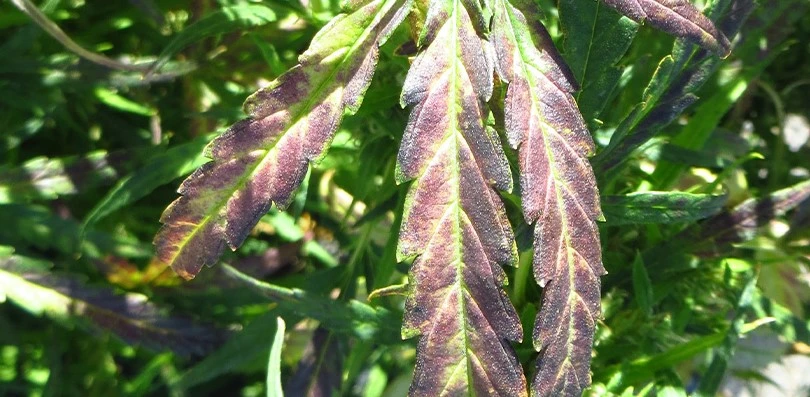
Conclusion
Phosphorus is a cornerstone of plant nutrition, playing a critical role in energy transfer, root development, and reproductive processes. Phosphorus deficiency, though often subtle in its early stages, can have significant impacts on plant health and productivity. By understanding the causes, recognizing the symptoms, and applying effective treatments, gardeners and farmers can ensure that their plants receive the phosphorus they need to thrive.
Proactive management, including regular soil testing, balanced fertilization, and sustainable farming practices, is key to preventing phosphorus deficiency. With the right approach, it is possible to maintain healthy, productive soils that support robust plant growth, leading to bountiful harvests and a sustainable future for agriculture. By embracing a holistic view of plant nutrition and soil health, we can overcome the challenges of phosphorus deficiency and unlock the full potential of our crops and gardens.
